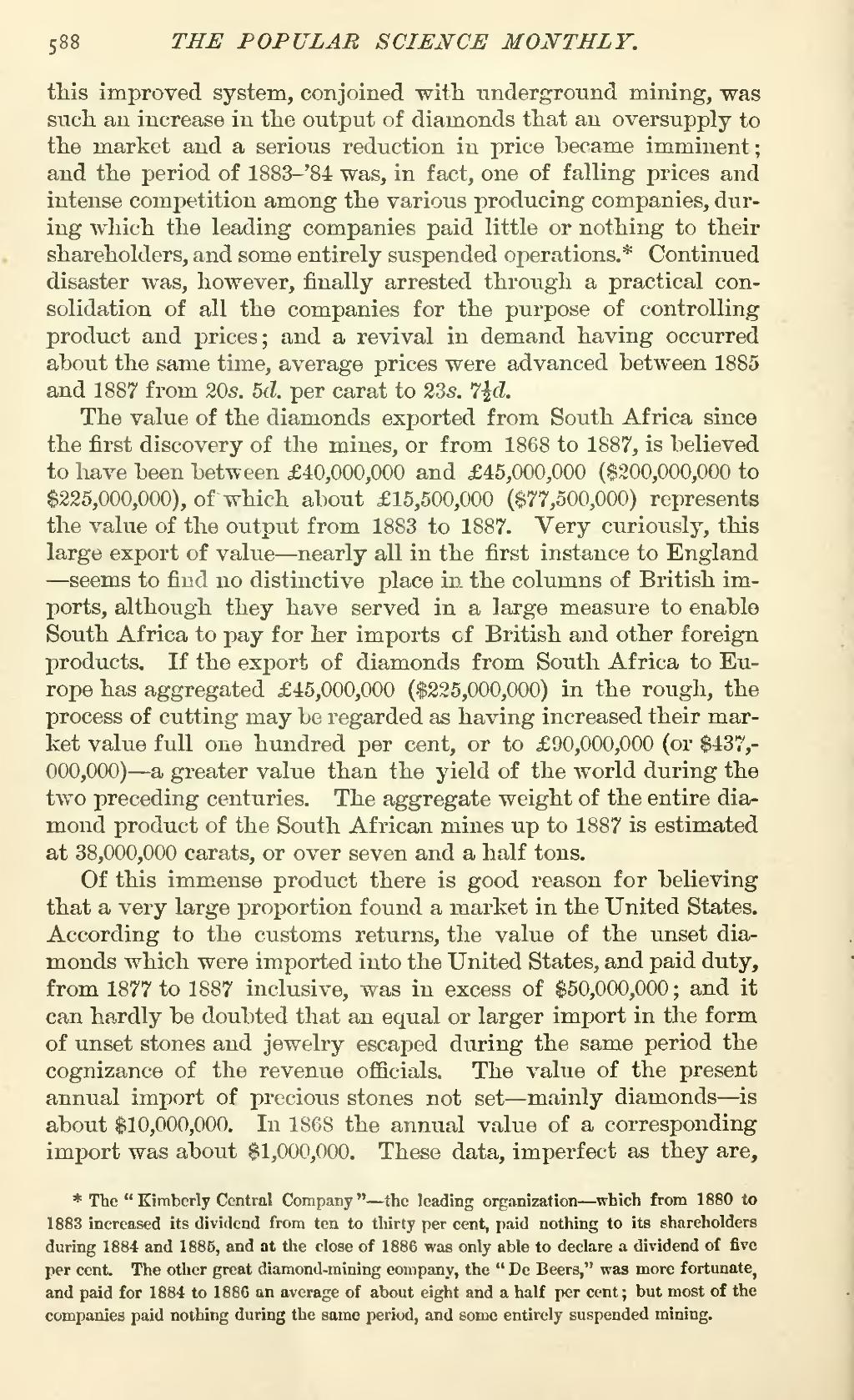this improved system, conjoined with underground mining, was such an increase in the output of diamonds that an oversupply to the market and a serious reduction in price became imminent; and the period of 1883-'84 was, in fact, one of falling prices and intense competition among the various producing companies, during which the leading companies paid little or nothing to their shareholders, and some entirely suspended operations.[1] Continued disaster was, however, finally arrested through a practical consolidation of all the companies for the purpose of controlling product and prices; and a revival in demand having occurred about the same time, average prices were advanced between 1885 and 1887 from 20s. 5d. per carat to 23s. 712d.
The value of the diamonds exported from South Africa since the first discovery of the mines, or from 1868 to 1887, is believed to have been between £40,000,000 and £45,000,000 ($200,000,000 to $225,000,000), of which about £15,500,000 ($77,500,000) represents the value of the output from 1883 to 1887. Very curiously, this large export of value—nearly all in the first instance to England—seems to find no distinctive place in the columns of British imports, although they have served in a large measure to enable South Africa to pay for her imports of British and other foreign products. If the export of diamonds from South Africa to Europe has aggregated £45,000,000 ($225,000,000) in the rough, the process of cutting may be regarded as having increased their market value full one hundred per cent, or to £90,000,000 (or $437,000,000)—a greater value than the yield of the world during the two preceding centuries. The aggregate weight of the entire diamond product of the South African mines up to 1887 is estimated at 38,000,000 carats, or over seven and a half tons.
Of this immense product there is good reason for believing that a very large proportion found a market in the United States. According to the customs returns, the value of the unset diamonds which were imported into the United States, and paid duty, from 1877 to 1887 inclusive, was in excess of $50,000,000; and it can hardly be doubted that an equal or larger import in the form of unset stones and jewelry escaped during the same period the cognizance of the revenue officials. The value of the present annual import of precious stones not set—mainly diamonds—is about $10,000,000. In 1868 the annual value of a corresponding import was about $1,000,000. These data, imperfect as they are,
- ↑ The "Kimberly Central Company"—the leading organization—which from 1880 to 1883 increased its dividend from ten to thirty per cent, paid nothing to its shareholders during 1884 and 1885, and at the close of 1886 was only able to declare a dividend of five per cent. The other great diamond-mining company, the "De Beers," was more fortunate, and paid for 1884 to 1886 an average of about eight and a half per cent; but most of the companies paid nothing during the same period, and some entirely suspended mining.
